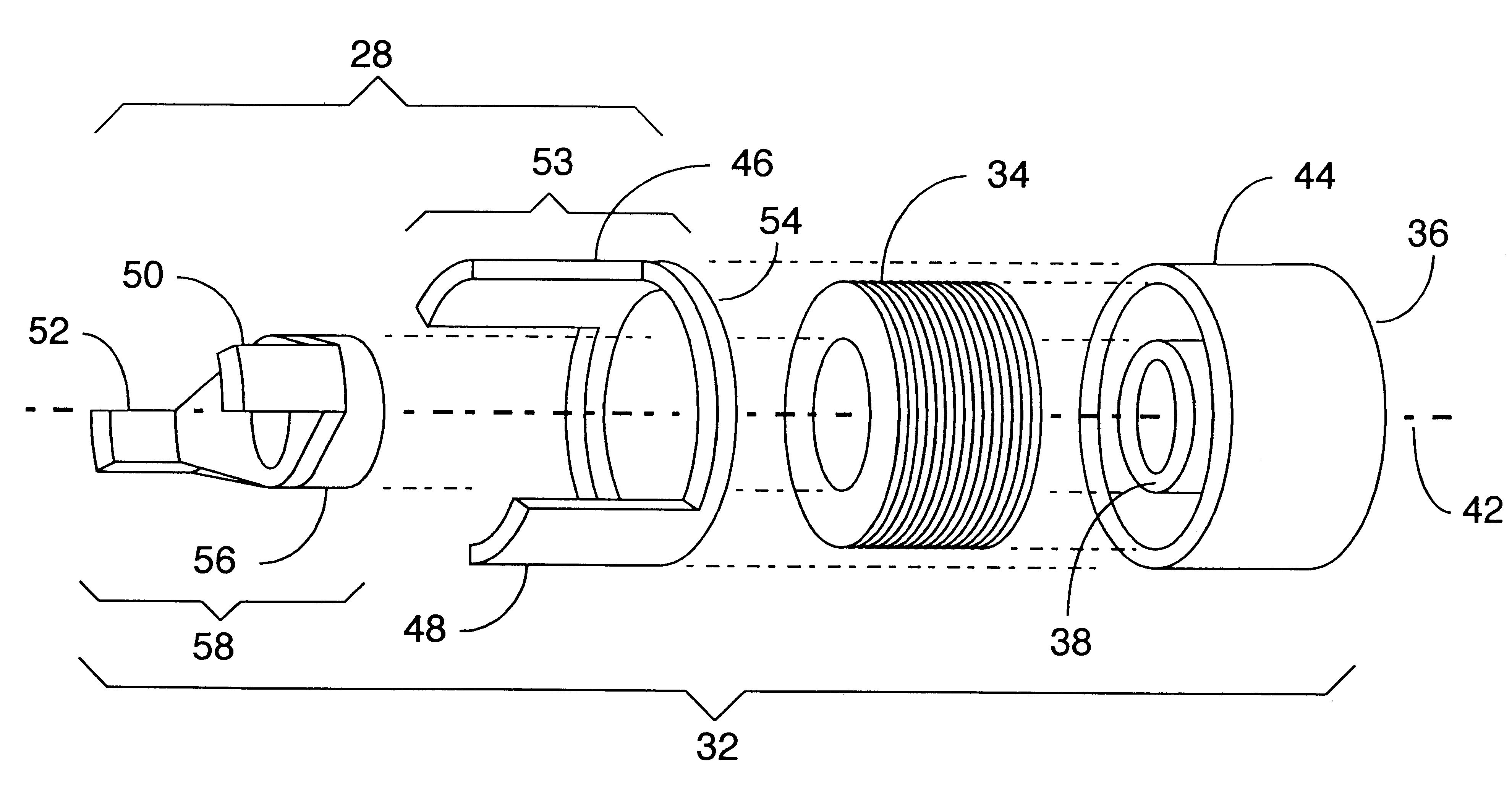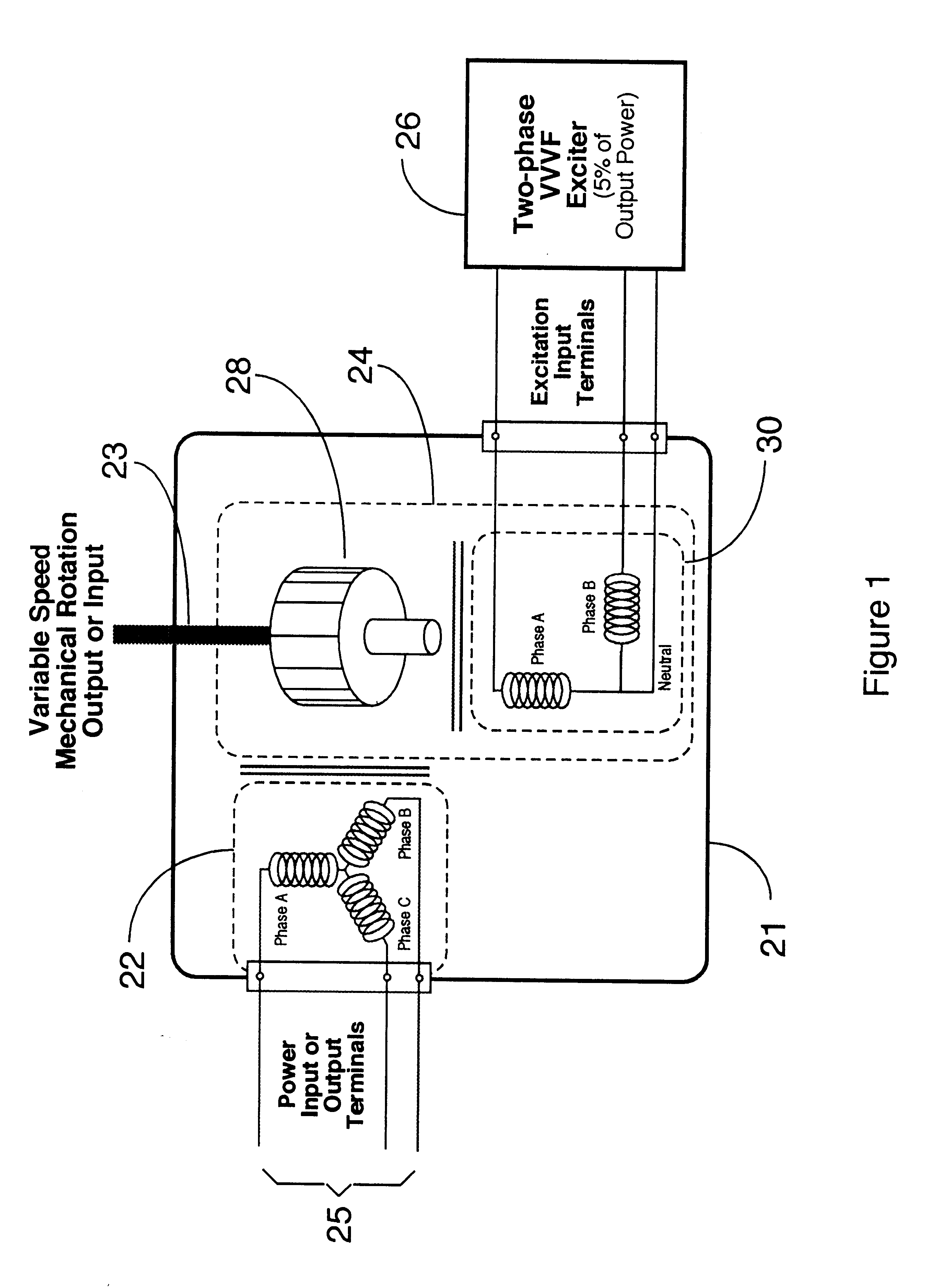Brushless, separately-excited, variable-speed motor and AC generator/alternator with solenoid-wound, biphase AC rotor
a variable speed motor and solenoid-wound technology, applied in the direction of magnetic circuit rotating parts, electric generator control, magnetic circuit shape/form/construction, etc., can solve the problems of increasing the cost of stator and rotor complexity, significantly more complex electromechanical machines, and increasing the cost of induction machines
- Summary
- Abstract
- Description
- Claims
- Application Information
AI Technical Summary
Problems solved by technology
Method used
Image
Examples
Embodiment Construction
As illustrated in FIG. 1, a machine 21 of the present invention includes a three-phase (or other conventional design) stator 22 and a two-phase (biphase) AC rotor 24. As indicated by the duality shown in FIG. 1, the machine can operate as a motor or as an AC generator or alternator. As a motor, power is supplied to the stator terminals 25, and the shaft 23 provides the variable-speed, variable-torque, mechanical rotation output. As a generator or alternator, the shaft 23 is driven by a mechanical source (such as an engine) and variable voltage, variable-frequency power is supplied from the stator windings 25 to electrical loads.
In a motor or alternator system, the machine rotor is supplied by a two-phase, variable-voltage, variable-frequency exciter 26. In typical operation, the exciter only needs to control about 5% of the total system throughput. The rotating pole piece assembly 28 rotates with respect to stator 22 and is magnetically coupled to the two-phase rotor excitation coil...
PUM
 Login to View More
Login to View More Abstract
Description
Claims
Application Information
 Login to View More
Login to View More - R&D
- Intellectual Property
- Life Sciences
- Materials
- Tech Scout
- Unparalleled Data Quality
- Higher Quality Content
- 60% Fewer Hallucinations
Browse by: Latest US Patents, China's latest patents, Technical Efficacy Thesaurus, Application Domain, Technology Topic, Popular Technical Reports.
© 2025 PatSnap. All rights reserved.Legal|Privacy policy|Modern Slavery Act Transparency Statement|Sitemap|About US| Contact US: help@patsnap.com



